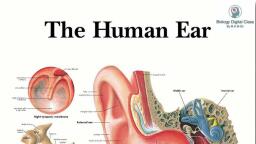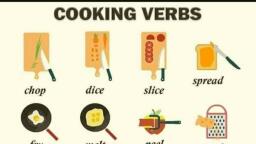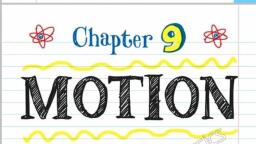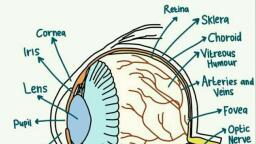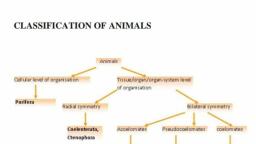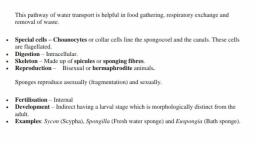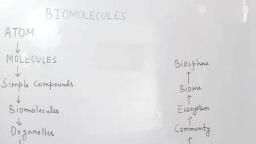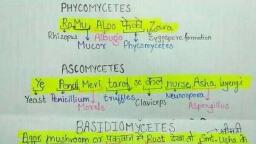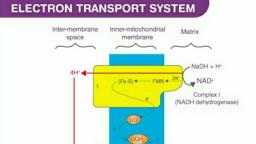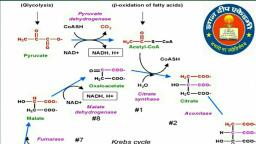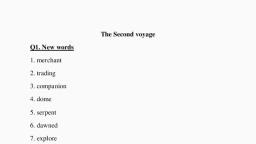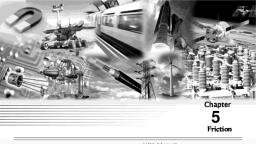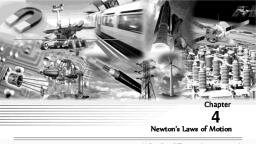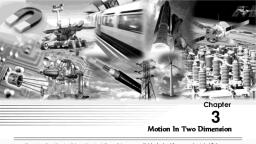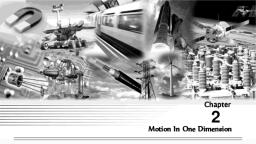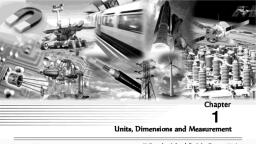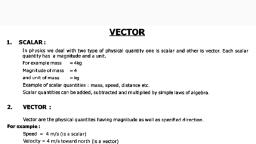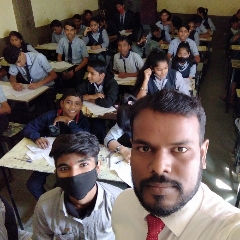Question 1 :
A ball is thrown upward with a velocity of 100m/s it will reach the ground after :-
Question 3 :
A particle revolves around a circular path. The acceleration of the particle is
Question 4 :
A car of mass 1000 kg moves on a circular track of radius 20 m. If the coefficient of friction is 0.64, then the maximum velocity with which the car can move is
Question 5 :
A body, constrained to move in the {tex} y {/tex} -direction, is subjected to a force {tex} \vec { F } = - 2 \hat { i } + 15 \hat { j } + 6 \hat { k } {/tex} newtons. The work done by this force in moving the body a distance of {tex} 10 \mathrm { m } {/tex} along the {tex} y {/tex} -axis is<br>
Question 6 :
Find the ratio of the distances traveled by a body falling freely from rest in the first, second and third seconds respectively.
Question 9 :
Which of the following sets of factors will affect the horizontal distance covered by an athlete in a long-jump event
Question 10 :
A car moves on a circular road. It describes equal angles about the centre in equal intervals of time. Which of the following statement about the velocity of the car is true?
Question 11 :
A body moves with constant angular velocity on a circle. The magnitude of angular acceleration
Question 12 :
The unit vectors along the three co-ordinate axes are related as
Question 13 :
Two particles A and B having different masses are projected from a tower with same speed. A is projected vertically upward and B vertically downward. On reaching the ground.<br>
Question 14 :
A body is projected horizontally with velocity {tex} 3 \mathrm { m } / \mathrm { s } {/tex} from a height {tex} 5 \mathrm { m } . {/tex} It's horizontal range is
Question 15 :
A particle moves in a plane with a constant acceleration in a direction different from the initial velocity. The path of the particle is a/an
Question 16 :
A cylindrical vessel partially filled with water is rotated about its vertical central axis. Its surface will
Question 18 :
Two stones are moving with same angular speeds in the radii of circular paths {tex} 1 \mathrm { m } {/tex} and {tex} 2 \mathrm { m } {/tex}. The ratio of their linear speed is {tex} \ldots . \mathrm { X } \ldots {/tex}. Here, {tex} \mathrm { X } {/tex} refers to
Question 19 :
If {tex} \vec { A } = 5 \hat { i } + 7 \hat { j } - 3 \hat { k } {/tex} and {tex} \vec { B } = 2 \hat { i } + 2 \hat { j } - a \hat { k } {/tex} are perpendicular vectors, the value of {tex} a {/tex} is
Question 20 :
A boat is moving with a velocity {tex} 3 \hat { i } + 4 \hat { j } {/tex} with respect to ground. The water in the river is moving with a velocity {tex} - 3 \hat { i } - 4 \hat { j } {/tex} with respect to ground. The relative velocity of the boat with respect to water is
Question 21 :
A cyclist turns around a curve at 15 miles/hour. If the turns at double the speed, the tendency to overturn is
Question 22 :
If {tex} | \overrightarrow { \mathbf { A } } \times \overrightarrow { \mathbf { B } } | = \sqrt { 3 } \overrightarrow { \mathbf { A } } \overrightarrow { \mathbf { B } } , {/tex} then the value of {tex} | \overrightarrow { \mathbf { A } } + \overrightarrow { \mathbf { B } } | {/tex} is :
Question 24 :
A ball is released from the top of a height $h$. It takes time $T$ to reach the ground. What is the position of the ball (from ground) after time $\frac{T}{3}$
Question 25 :
A ball is dropped off a high building and strikes the ground with an impact velocity of 30 m/s. Calculate the height of building :<br/>
Question 26 :
A particle undergoes uniform circular motion. About which point on the plane of the circle, will the angular momentum of the particle remain conserved?
Question 27 :
A balloon is rising vertically up with a velocity of $29$ $ms^{-1}$. A stone is dropped from it and it reaches the ground in $10$s. The height of the balloon when the stone was dropped from it is: $(g=9.8 ms^{-1})$.
Question 28 :
The acceleration of a body projected upwards with a certain velocity is
Question 29 :
A boat is moving with a velocity {tex} 3 \hat { \mathrm { i } } + 4 \hat { \mathrm { j } } {/tex} with respect to ground. The water in the river is moving with a velocity {tex} - 3 \hat { \mathrm { i } } - 4 \hat { \mathrm { j } } {/tex} with respect to ground. The relative velocity of the boat with respect to water is
Question 30 :
If {tex} \overrightarrow { \mathrm { A } } = 4 \hat { \mathrm { i } } + 6 \hat { \mathrm { j } } {/tex} and {tex} \overrightarrow { \mathrm { B } } = 2 \hat { \mathrm { i } } + 3 \hat { \mathrm { j } } . {/tex} Then
Question 31 :
The vector sum of two forces is perpendicular to their vector differences. In that case, the forces
Question 32 :
The vector having magnitude equal to 3 and perpendicular to the two vectors {tex} \overrightarrow { \mathbf { A } } = 2 \hat { \mathbf { i } } + 2 \hat { \mathbf { j } } + \hat { \mathbf { k } } {/tex} and {tex} \overrightarrow { \mathbf { B } } = 2 \hat { \mathbf { i } } - 2 \hat { \mathbf { j } } + 3 \hat { \mathbf { k } } {/tex} is:
Question 33 :
A body is acted upon by a constant force directed towards a fixed point. The magnitude of the force varies inversely as the square of the distance from the fixed point. What is the nature of the path?
Question 34 :
Let two vectors {tex} \overrightarrow { \mathbf { A } } = 3 \hat { \mathbf { i } } + \hat { \mathbf { j } } + 2 \hat { \mathbf { k } } {/tex} and {tex} \overrightarrow { \mathbf { B } } = 2 \hat { \mathbf { i } } - 2 \hat { \mathbf { j } } + 4 \hat { \mathbf { k } } . {/tex} Consider the unit vector perpendicular to both {tex} \overrightarrow { \mathbf { A } } {/tex} and {tex} \overrightarrow { \mathbf { B } } {/tex} is
Question 35 :
A projectile can have the same range {tex} \mathrm { R } {/tex} for two angles of projection. If {tex} \mathrm { t } _ { 1 } {/tex} and {tex} \mathrm { t } _ { 2 } {/tex} be the times of flight in two cases, then what is the product of two times of flight?
Question 36 :
An aeroplane is flying horizontally with a velocity of 600 km/h and at a height of 1960 m. When it is vertically above a point <i>A</i> on the ground a bomb is released from it. The bomb strikes the ground at point <i>B</i>. The distance <i>AB</i> is
Question 37 :
If {tex} \mathrm V_1 {/tex} is velocity of a body projected from the point {tex} \mathrm A {/tex}and {tex} \mathrm V _2 {/tex} is the velocity projected from point {tex} \mathrm B {/tex} which is vertically below the highest point {tex} \mathrm C {/tex} , if both the bodies collide, then <br><img style='object-fit:contain' src="https://storage.googleapis.com/teachmint/question_assets/NEET/5df31d3e8701466b65e04ddf"><br>
Question 38 :
If {tex} a _ { r } {/tex} and {tex} a _ { t } {/tex} represent radial and tangential accelerations, the motion of particle will be uniformly circular, if
Question 39 :
The equation of a projectile is {tex} y = \sqrt { 3 } x - \frac { g x ^ { 2 } } { 2 } {/tex} The angle of projection is given by
Question 40 :
If the resultant of the vectors {tex} 3 \hat { \mathrm { i } } + 4 \hat { \mathrm { j } } + 5 \hat { \mathrm { k } } {/tex} and {tex} 5 \hat { \mathrm { i } } + 3 \hat { \mathrm { j } } + 4 \hat { \mathrm { k } } {/tex} makes an angle {tex} \theta {/tex} with {tex} x {/tex} -axis, then {tex} \cos \theta {/tex} is
Question 41 :
A particle moves in a circle of radius {tex} 4 \mathrm { cm } {/tex} clockwise at constant speed {tex} 2 \mathrm { cm } / \mathrm { s } {/tex}. If {tex} \hat { \mathrm { x } } {/tex} and {tex} \hat { \mathrm { y } } {/tex} are unit acceleration vectors along {tex} \mathrm { X } {/tex} and {tex} \mathrm { Y } {/tex} -axis respectively {tex} \left( \mathrm { in } \ \mathrm { cm } / \mathrm { s } ^ { 2 } \right) , {/tex} the acceleration of the particle at the instant half way between {tex} \mathrm { P } {/tex} and {tex} \mathrm { Q } {/tex} is given by<br><img style='object-fit:contain' src="https://storage.googleapis.com/teachmint/question_assets/NEET/5df31e04ce13786b5fdc512f"><br>
Question 42 :
A particle is projected with a velocity {tex} v {/tex} such that its range on the horizontal plane is twice the greatest height attained by it. The range of the projectile is (where g is acceleration due to gravity)
Question 43 :
A particle of mass {tex}{ m } {/tex} is projected with a velocity {tex} { v } {/tex} making an angle of {tex} 30 ^ { \circ } {/tex} with the horizontal. The magnitude of ( {tex} { V } _ { { h } } {/tex} {tex} \times { h } {/tex} ) of the projectile when the particle is at its maximum height {tex} h {/tex}
Question 44 :
A particle moves in the {tex} x - y {/tex} plane under the influence of a force such that its linear momentum is<br>{tex} \vec { p } ( t ) = A [ \hat { i } \cos ( k t ) - \hat { j } \sin ( k t ) ] , {/tex} where {tex} A {/tex} and {tex} k {/tex} are constants. The angle between the force and the momentum is
Question 45 :
A boat is sent across a river with a velocity of {tex} 8 \mathrm { km } / \mathrm { h } {/tex}. If the resultant velocity of the boat is {tex} 10 \mathrm { km } / \mathrm { h } {/tex}, the river is flowing with a velocity of
Question 46 :
A particle is moving such that its position coordinate (x, y) are<br> (2m, 3m) at time t = O <br> (6m, 7m) at time t = 2s and<br> (13m, 14m) at time t=5s<br> Average velocity vector ({tex} \vec {V_{av}}{/tex})from t = 0 to t = 5s is:
Question 48 :
A boat is moving with a velocity {tex} 3 \hat { i } + 4 \hat { j } {/tex} with respect to the ground. The water in the river is flowing with a velocity {tex} - 3 \hat { i } - 4 \hat { j } {/tex} with respect to the ground. The velocity of the boat relative to the water is
Question 49 :
An aircraft moving with a speed of {tex} 250 \mathrm { m } / \mathrm { s } {/tex} is at a height of {tex} 6000 \mathrm { m } , {/tex} just overhead of an anti aircraft gun. If the muzzle velocity is {tex} 500 \mathrm { m } / \mathrm { s } {/tex}, the firing angle {tex} q {/tex} should be:<br><img style='object-fit:contain' src="https://storage.googleapis.com/teachmint/question_assets/NEET/5e0dc59de50f934b847a59af">
Question 50 :
Two forces have magnitudes in the ratio {tex}3: 5{/tex} and the angle between their directions is {tex} 60 ^ { \circ } . {/tex} If their resultant is {tex} 35 \mathrm { N } , {/tex} their magnitudes are
Question 51 :
A ball thrown up is caught by the thrower $6$ s after start. The height to which the ball has risen is $(g=10 m/s^2)$.
Question 52 :
Two forces acting in opposite directions have a resultant of {tex} 10 \mathrm { N } {/tex}. If they act at right angles to each other, the resultant is {tex} 50 \mathrm { N } {/tex}. The magnitudes of the forces are
Question 53 :
For motion in two or three dimensions, the angle between velocity and acceleration is
Question 54 :
A small cone filled with water is revolved in a vertical circle of radius 4 m and the water does not fall down. What must be the maximum period of revolution?
Question 55 :
A {tex} 2 \mathrm { m } {/tex} wide truck is moving with a uniform speed {tex} v _ { 0 } = 8 \mathrm { m } / \mathrm { s } {/tex} along a straight horizontal road. A pedestrain starts to cross the road with a uniform speed {tex} v {/tex} when the truck is {tex}4 \mathrm { m } {/tex} away from him. The minimum value of {tex} v {/tex} so that he can cross the road safely is<br><img style='object-fit:contain' src="https://storage.googleapis.com/teachmint/question_assets/NEET/5e0dc657e50f934b847a5a4c">
Question 56 :
A particle moves in the {tex} \mathrm { X } - \mathrm { Y } {/tex} plane with a constant acceleration {tex} 1.5 \mathrm { m } / \mathrm { s } ^ { 2 } {/tex} in the direction making an angle of {tex} 37 ^ { \circ } {/tex} with the {tex} \mathrm { X } {/tex} -axis. At {tex} \mathrm t = 0 {/tex} the particle is at the origin and its velocity is {tex} 8.0 \mathrm { m } / \mathrm { s } {/tex} along the {tex} \mathrm { X } {/tex}-axis. Find the position of the particle at {tex} \mathrm t = 4.0 \mathrm { s } {/tex}.
Question 58 :
A bus is moving with a velocity of {tex} 10 \mathrm { ms } ^ { - 1 } {/tex} on a straight road. A scootorist wishes to overtake the bus in one minute. If the bus is at a distance of {tex} 1.2 \mathrm { km } {/tex} ahead, then the velocity with which he has to chase the bus is
Question 59 :
A vector of magnitude {tex} 5 \sqrt { 3 } {/tex} units and another vector of magnitude 10 units are inclined to each other at an angle of {tex} 30 ^ { \circ } . {/tex} The magnitude of their vector product is
Question 60 :
A projectile thrown with velocity v making angle {tex} \theta {/tex} with vertical gains maximum height {tex} \mathrm { H } {/tex} in the time for which the projectile remains in air, the time period is
Question 61 :
A particle of unit mass is projected with velocity {tex} u {/tex} at an inclination {tex} \alpha {/tex} above the horizon in a medium whose resistance is {tex} k {/tex} times the velocity. Its direction will again make an angle {tex} \alpha {/tex} with the horizon after a time
Question 62 :
If the sum of two unit vectors is a unit vector, then the magnitude of their difference is
Question 63 :
A stone is dropped from the top of a tall cliff and n seconds later another stone is thrown vertically downwards with velocity u. Then the second stone overtakes the first, below the top of the cliff at a distance given by:<br/><div>[Assume u sufficiently enough to overtake the first stone]</div>
Question 65 :
Which of the following is not possible for a body in uniform motion?
Question 66 :
A car {tex} A {/tex} is going north-east at {tex} 80\ \mathrm { km } / \mathrm { h } {/tex} and another car {tex} B {/tex} is going south-east at {tex} 60\ \mathrm { km } / \mathrm { h } {/tex}. The direction of the velocity of {tex} A {/tex} relative to {tex} B {/tex} makes an angle with the north equal to
Question 67 :
If two forces {tex}\stackrel \rightarrow F {/tex} and {tex}\stackrel \rightarrow G {/tex} act at right angles to each other, their resultant has the magnitude
Question 68 :
The velocity-time graph of a body is shown in fig. The ratio of average acceleration during the intervals {tex}\mathrm{OA}{/tex} and {tex}\mathrm{AB}{/tex} is<br><img style='object-fit:contain' src="https://storage.googleapis.com/teachmint/question_assets/NEET/5e0f2187ed6e36502132f67e"><br>
Question 69 :
The angle between the two vectors {tex} \vec { A } = 3 \hat { i } + 4 \hat { j } + 5 \hat { k } {/tex} and {tex} \vec { B } = 3 \hat { i } + 4 \hat { j } - 5 \hat { k } {/tex} is<br>
Question 70 :
A body starts from rest and travels '{tex}{ \text {s} } {/tex}' in {tex} 2 ^ { \text {nd } } {/tex} second, then acceleration is
Question 71 :
A car starting from rest, accelerates at the rate {tex} f {/tex} through a distance {tex} S {/tex}, then continues at constant speed for time {tex} t {/tex} and then decelerates at the rate {tex} \frac { f } { 2 } {/tex} to come to rest. If the total distance traversed is {tex}15{/tex} , then
Question 72 :
Two ships are {tex} 10 \mathrm { km } {/tex} apart on a line from south to north. The one farther north {tex} ( B ) {/tex} is moving towards west at 40 {tex} \mathrm { km } / \mathrm { h } {/tex} and the other {tex} ( A ) {/tex} is moving towards north at 40 {tex} \mathrm { km } / \mathrm { h } {/tex}. time taken to reach the distance of closest approach is
Question 73 :
Two vectors {tex} \vec { A } {/tex} and {tex} \vec { B } {/tex} are at right angles to each other,when
Question 74 :
A boy can throw a stone up to a maximum height of $10 m$. The maximum horizontal distance up to which the boy can throw the same stone up to will be 
Question 75 :
A stone tied to the end of a string of {tex} 1 \mathrm { m } {/tex} long is whirled in a horizontal circle with a constant speed. If the stone makes {tex}22 {/tex} revolution in {tex}44{/tex} seconds, what is the magnitude and direction of acceleration of the stone?
Question 76 :
Three vectors {tex} \vec { P } , \vec { Q } {/tex} and {tex} \vec { R } {/tex} are such that {tex} | \vec { P } | = | \vec { Q } | , | \vec { R } | = \sqrt { 2 } | \vec { P } | \operatorname { and } \vec { P } + \vec { Q } + \vec { R } = 0 . {/tex} The angles between {tex} \vec { P } {/tex} and {tex} \vec { Q } , \vec { Q } {/tex} and {tex} \vec { R } , {/tex} and {tex} \vec { P } {/tex} and {tex} \vec { R } {/tex} are, respectively,
Question 77 :
Three points are located at the vertices of an equilateral triangle whose side equal to {tex} a {/tex}. They all start moving simultaneously with velocity {tex} v {/tex} constant in modulus, with first point heading continually for the second, the second for the third, and the third for the first. How soon will the points converge?
Question 78 :
A ball is thrown vertically upwards with a velocity of $10 ms^-1$. IT returns to the ground with a velocity of$ 9 ms^-1$. If $g = 9.8 ms^-2$, then the maximum height attained by the ball is nearly ( assume a resistance to be uniform)
Question 79 :
The displacement of a particle is represented by the following equation: {tex} S = 3 t ^ { 3 } + 7 t ^ { 2 } + 5 t + 8{/tex} where <b>5</b> is in meter and {tex} t {/tex} in second. The acceleration of the particle at {tex} t = 1 s {/tex} is
Question 80 :
The position vector of a particle {tex} \overrightarrow { \mathrm { R } } {/tex} as a function of time is given by {tex} \overrightarrow { \mathrm { R } } = 4 \sin ( 2 \pi \mathrm { t } ) \hat { \mathrm { i } } + 4 \cos ( 2 \pi \mathrm { t } ) \hat { \mathrm { j } } {/tex} where {tex} \mathrm { R } {/tex} is in meter, t in seconds and {tex} \hat { \mathrm { i } } {/tex} and {tex} \hat { \mathrm { j } } {/tex} denote unit vectors along {tex} \mathrm { x } {/tex}-and {tex} \mathrm { y } {/tex}-directions, respectively. Which one of the following statements is wrong for the motion of particle?
Question 81 :
The distance travelled by a particle starting from rest and moving with an acceleration {tex} \frac { 4 } { 3 } \mathrm { ms } ^ { - 2 } , {/tex} in the third second is:
Question 82 :
Three forces acting on a body are shown in the figure. To have the resultant force only along the {tex} y {/tex} -direction, the magnitude of the minimum additional force needed is:<br><img style='object-fit:contain' src="https://storage.googleapis.com/teachmint/question_assets/NEET/5d5e75f8e5db655bbf109c27" /><br>
Question 83 :
A body starts from rest and travels {tex}\mathrm{'s'}{/tex} {tex} \mathrm { m } {/tex} in {tex} 2 ^ { \text {nd } } {/tex} second, then acceleration is
Question 84 :
The resultant of two forces {tex} 3 P {/tex} and {tex} 2 P {/tex} is {tex} R {/tex}. If the first force is doubled then the resultant is also doubled. The angle between the two forces is
Question 85 :
A particle moves along a circle of radius {tex} \left( \frac { 20 } { \pi } \right) \mathrm { m } {/tex} with constant tangential acceleration. It the velocity of particle is <b>80m/s</b> at end of second revolution after motion has begun, the tangential acceleration is
Question 86 :
A particle is projected with a certain velocity at an angle {tex} \alpha {/tex} above the horizontal from the foot of an inclined plane of inclination {tex} 30 ^ { \circ } . {/tex} If the particle strikes the plane normally then {tex} \alpha {/tex} is
Question 87 :
The unit vector parallel to the resultant of the vectors {tex} \vec { A } = 4 \hat { i } + 3 \hat { j } + \hat { k } {/tex} and {tex} \vec { B } = - \hat { i } + 3 \hat { j } - 3 \hat { k } {/tex} is
Question 88 :
The angle between the vectors {tex} \hat { i } + \hat { j } {/tex} and {tex} \hat { j } + \hat { k } {/tex} is
Question 89 :
A person sitting in the rear end of the compartment throws a ball towards the front end. The ball follows a parabolic path. The train is moving with velocity of 20{tex} \mathrm { m } / \mathrm { s } {/tex} . A person standing outside on the ground also observes the ball. How will the maximum heights {tex} \left( y _ { m } \right) {/tex} attained and the ranges ({tex} R {/tex}) seen by the thrower and the outside observer compare with each other?
Question 90 :
A unit mass has position vector {tex} \vec { r } = 8 \hat { i } - 4 \hat { j } {/tex} when its velocity is {tex} \vec { v } = 8 \hat { i } + 4 \hat { j } {/tex}. Its angular momentum about the origin is

